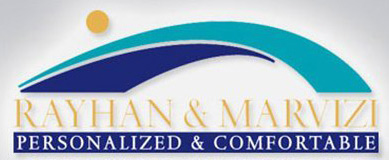We Focus on The Treatment & Prevention of Periodontal Gum Disease to Prevent Tooth Loss!
What is Gum Disease?
Gum disease occurs when bacteria builds up below the gum line, causing irritation that forces gums to move away from tooth roots. As the gums recede, more of the tooth is exposed to harmful bacteria. Over time, tooth roots become loose and eventually, teeth can fall out. In fact, gum disease is the leading cause of tooth loss among men and women in the U.S.
What Are the Benefits of Lasers in Treating Gum Disease?
Lasers can treat gum disease more quickly than traditional techniques, destroying bacteria below the gum line without the use of sharp instruments. The tiny, laser fibers slip right between the gum and the tooth so there’s less trauma to surrounding gum tissue. As a result, patients report far less discomfort when lasers are used, and because lasers help seal blood vessels and nerve endings, there’s less discomfort following treatment as well.
What is TRT?
TRT stands for thermal relaxation time. During laser gum treatment, lasers emit energy in pulses. The time between pulses is referred to as the thermal relaxation time.
A laser technique that uses longer intervals between laser pulses aimed at preserving the health of the surrounding gum tissue.
What Are the Benefits of TRT in Treating Gum Disease?
When laser pulses are very rapid and close together, the gum tissue can overheat. That means that while lasers can effectively kill off bacteria, they can also damage the gums. Thermal relaxation time is a relatively new concept, developed to help prevent the tissue damage that can occur from overheating during traditional laser treatment techniques. In today’s laser treatments, the frequency of pulses is modulated to maximize the benefits of TRT, avoiding damage and protecting the surrounding tissue.
What is a Gum Graft?
A gum graft is a simple procedure that’s used to transfer gum tissue from one location in your mouth to another location.
Why Are Gum Grafts Needed?
Gum grafts are typically used for one of two reasons: To help replace gum tissue that has receded, resulting in significant exposure of the tooth that leaves it open to decay and extreme sensitivity, and to correct the appearance of a person’s smile. The first reason is the most common. Gum recession occurs to some degree as we age, but it can also occur as a result of gum disease. Receding gums not only make your teeth look “extra long,” but they can also expose areas of your teeth to decay which can lead to tooth loss.
Where Does the Graft Tissue Come From?
In most cases, the tissue is removed from the roof of your mouth, either directly or through use of a flap that exposes the underlying layer of tissue. In some cases, a graft called a pedicle graft is used to take gum tissue remaining around the tooth and reposition it so it helps cover the exposed area. Pedicle grafts can only be performed when there is plenty of gum tissue in the area near the tooth. And in other cases, tissue from a tissue bank may be used.
What is Recovery Like?
You’ll be able to return home soon after the procedure, but because you’ll be sedated during the procedure, you’ll need someone to drive you. For the first week or two following surgery, you’ll need to avoid hot, crunchy or hard foods if tissue was removed from your palate. You may also want to take painkillers to help relieve some of the discomfort you may feel in the roof of your mouth. Dr. Rayhan will give you specific instructions on how to care for the area around the graft. Most patients report complete recovery within a week or two, and most return to work the day after surgery.
To find out more about our Periodontal Gum Treatment services or the other dentistry services we provide, please call our Los Angeles dental office at 323.931.3881.


